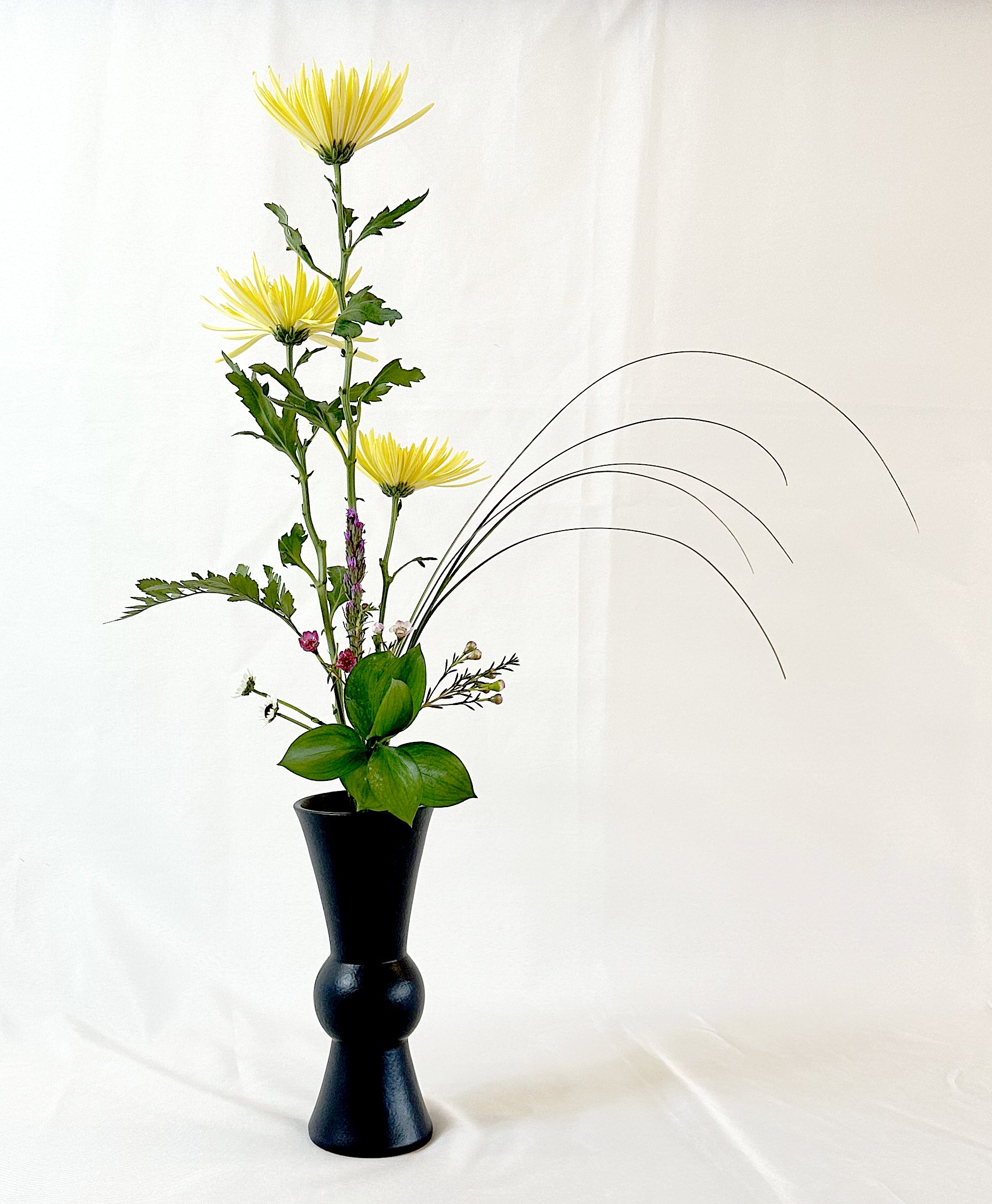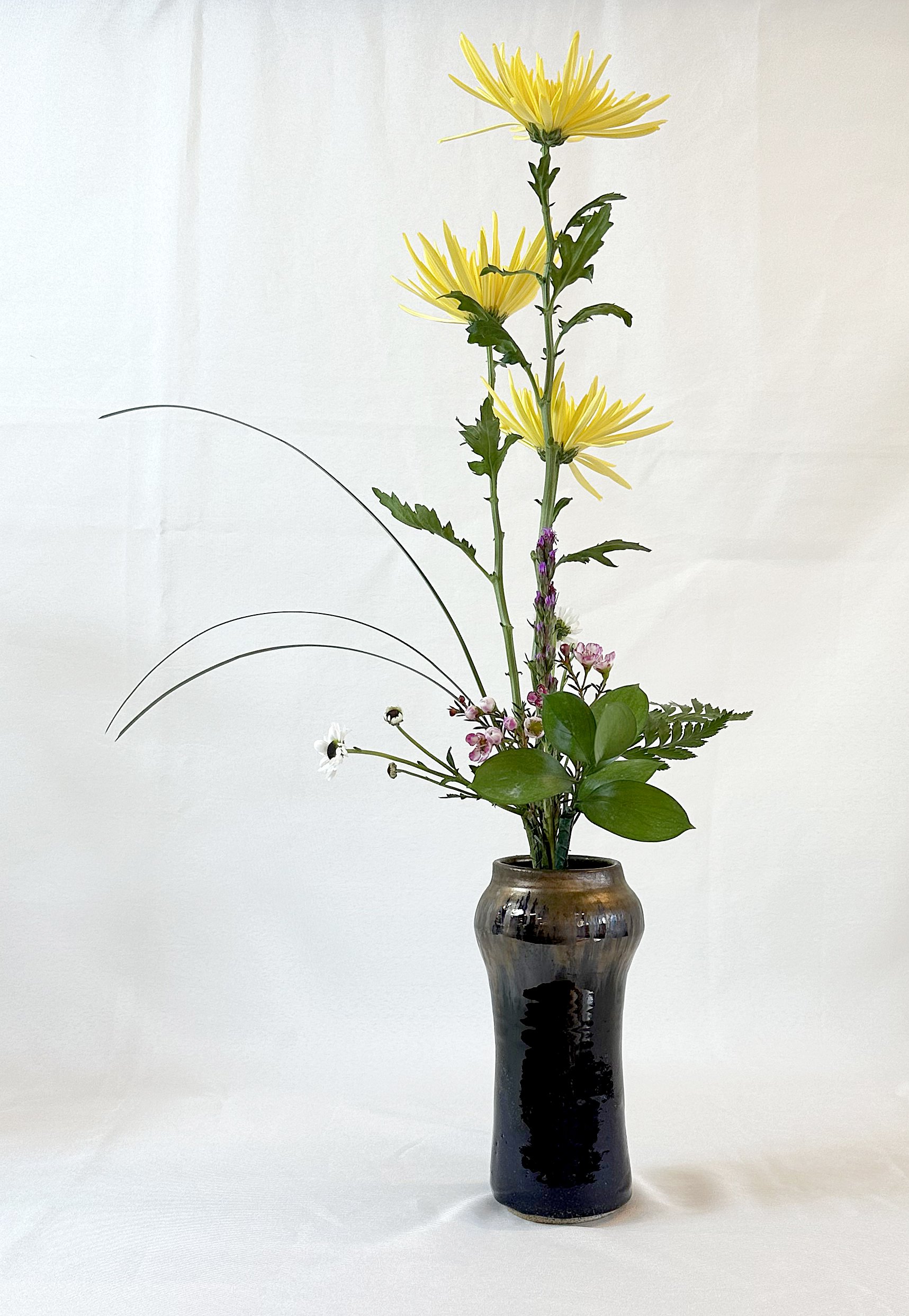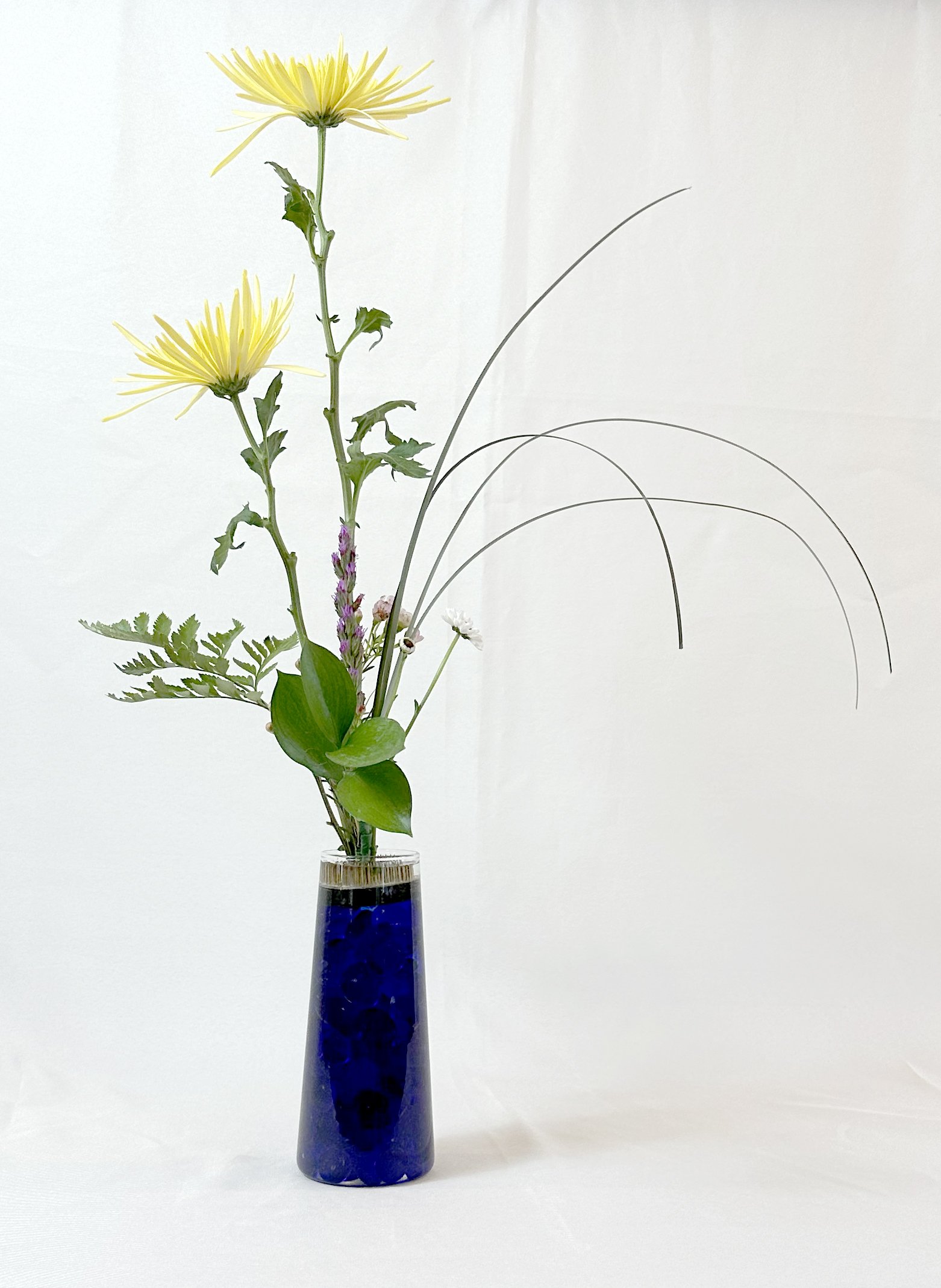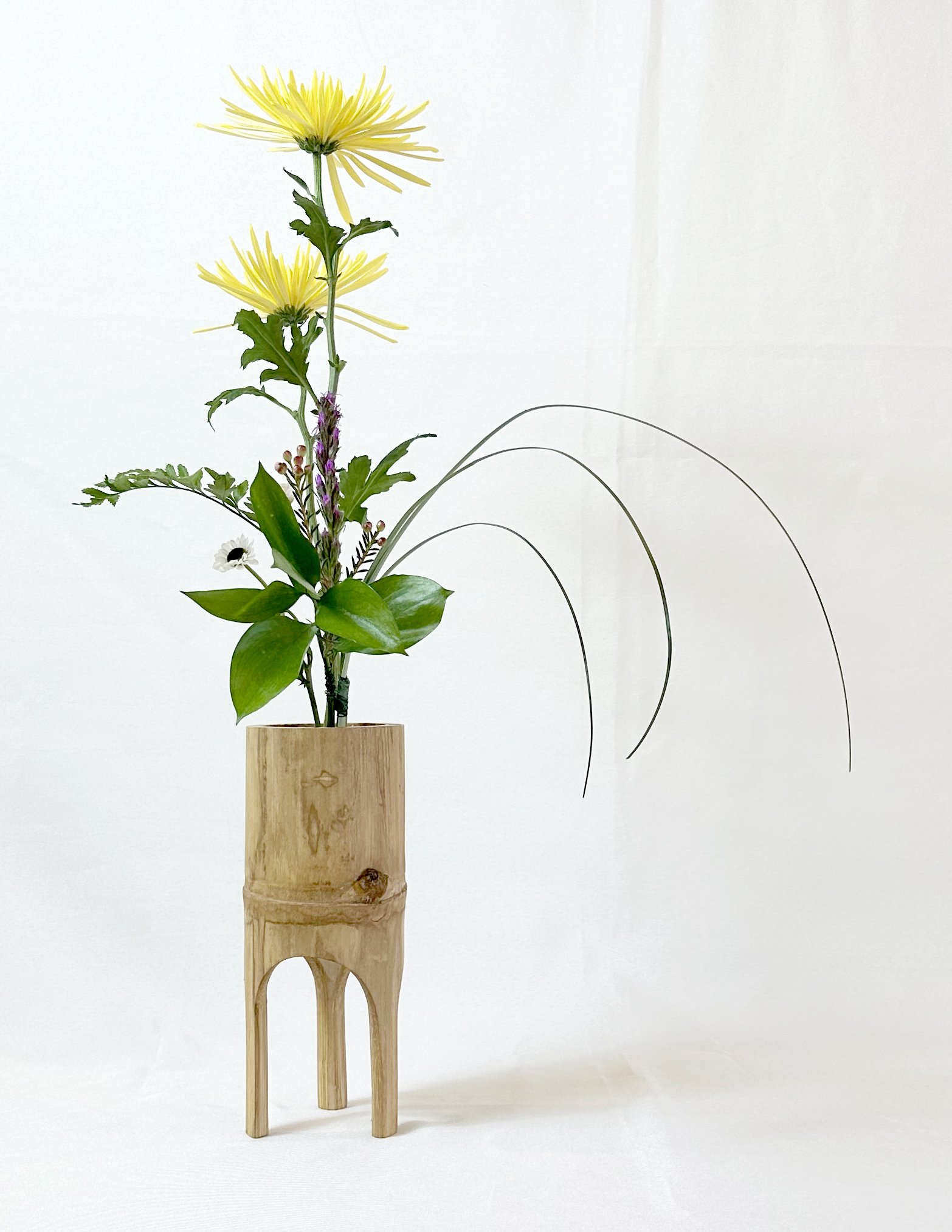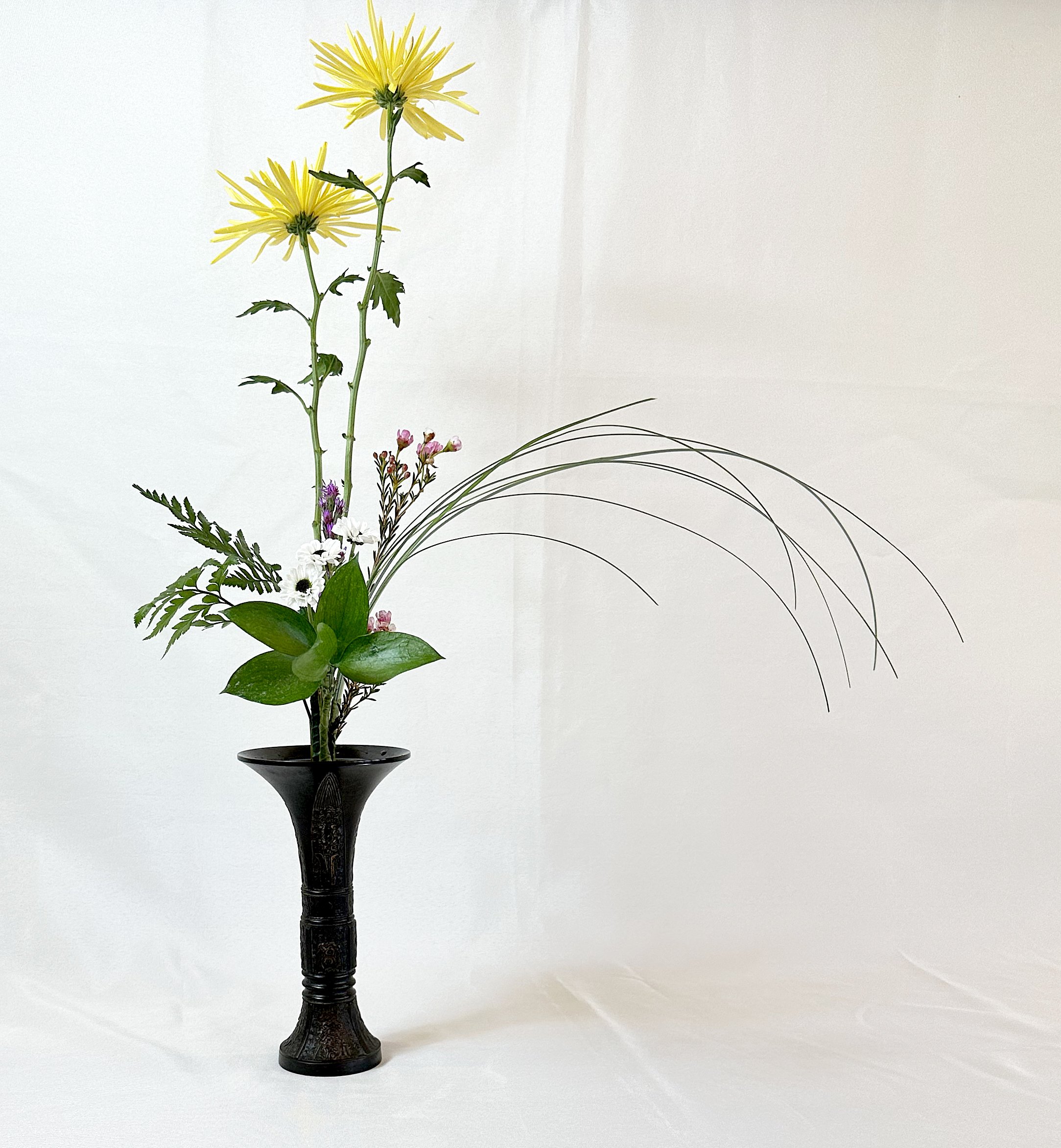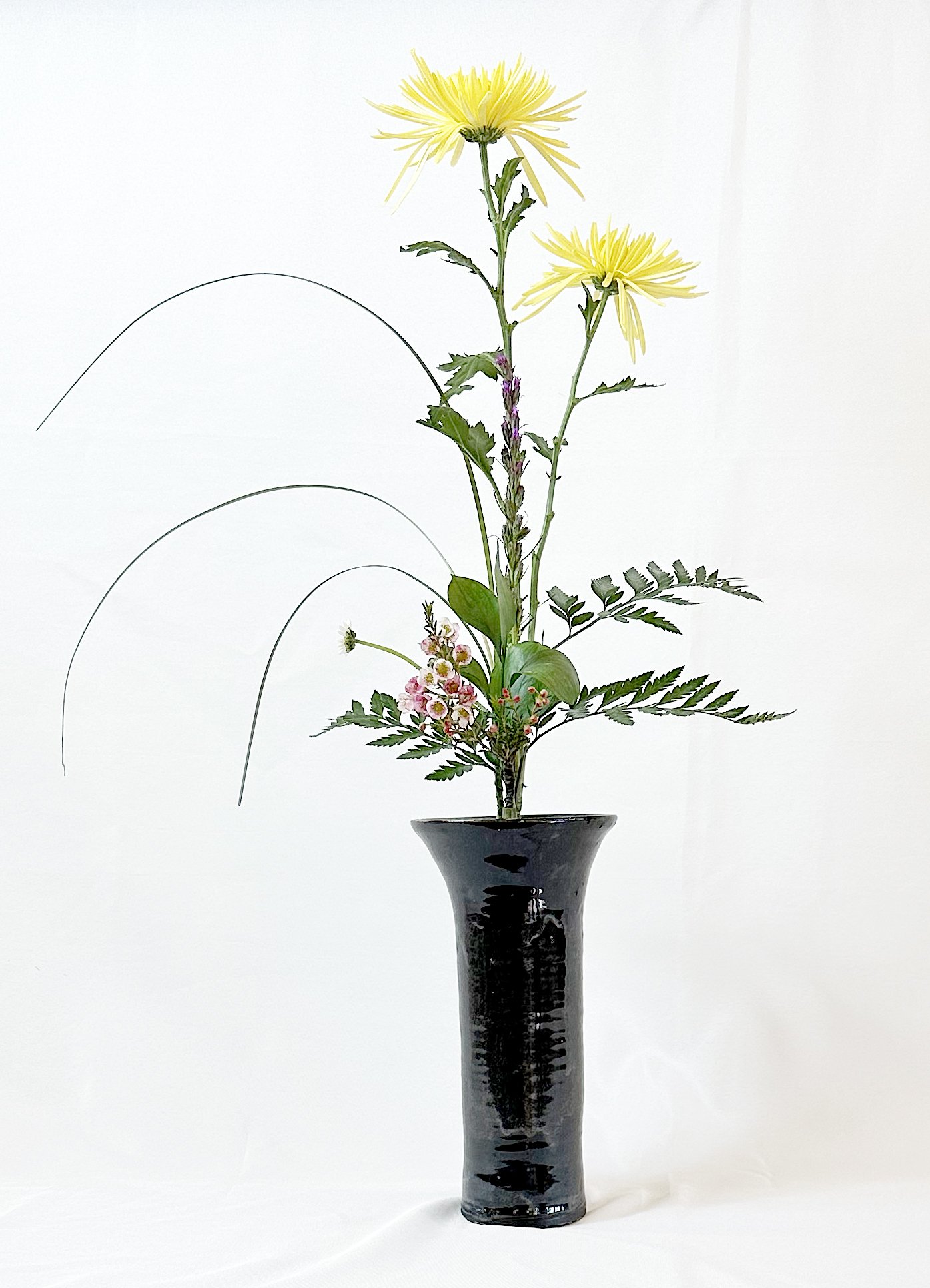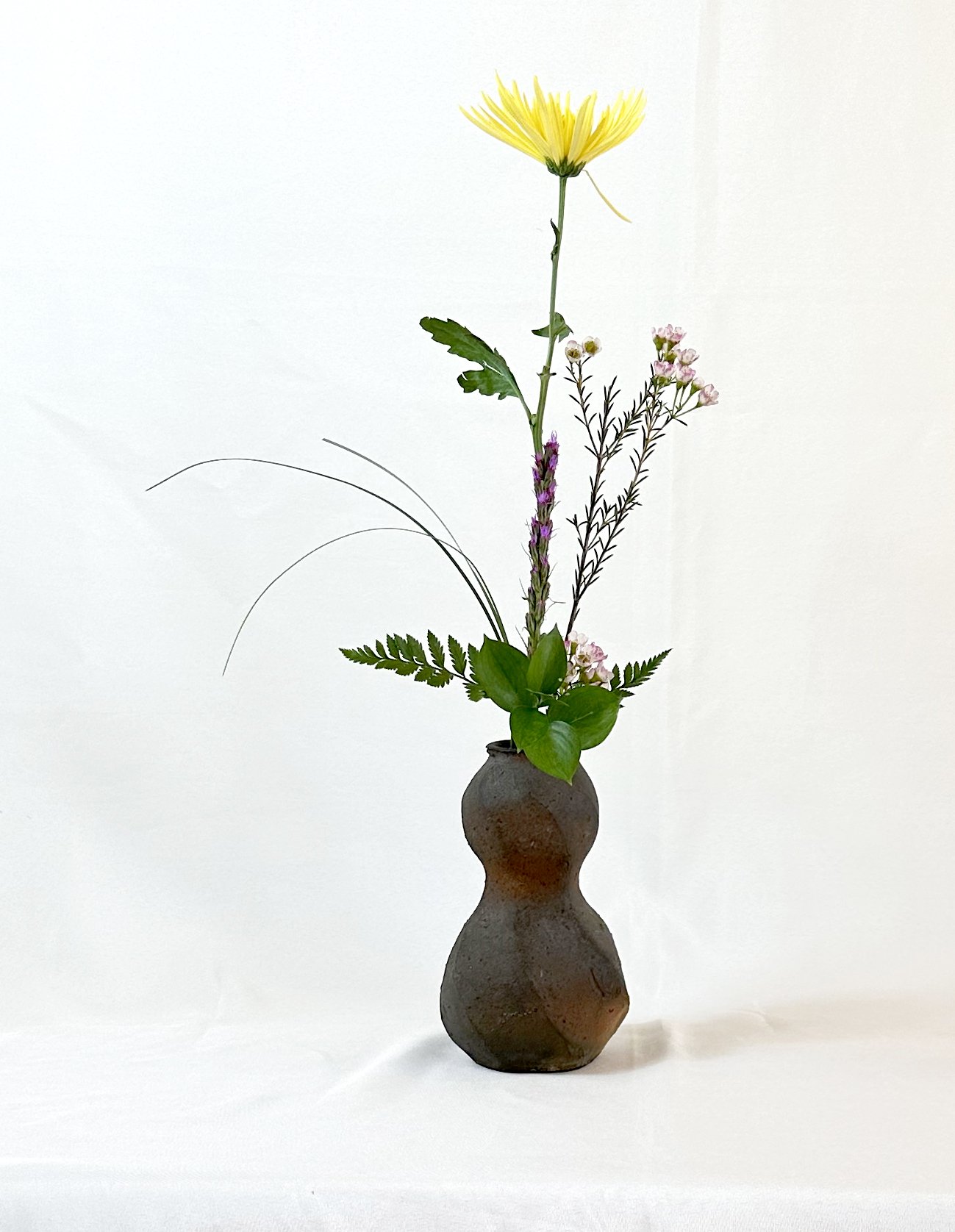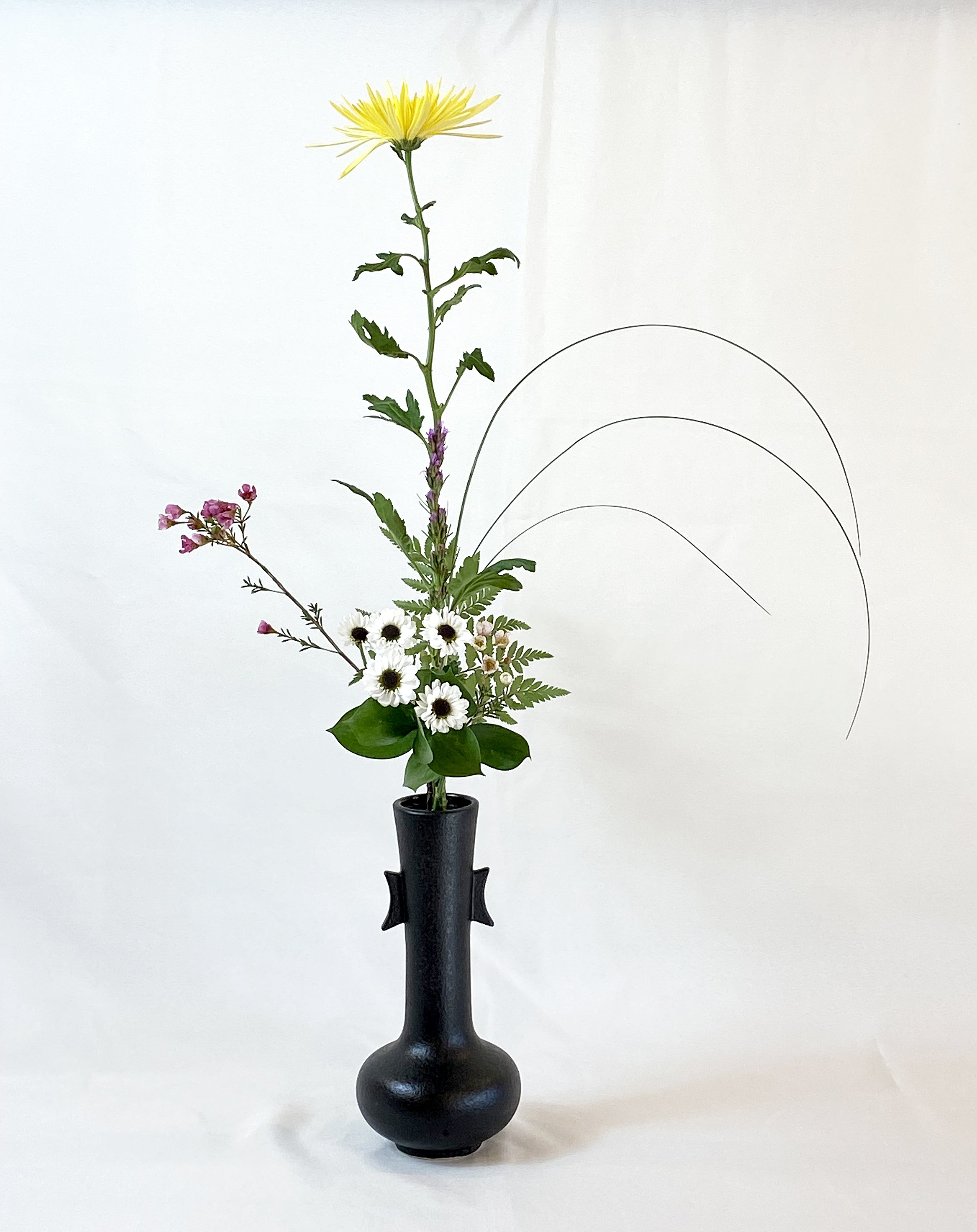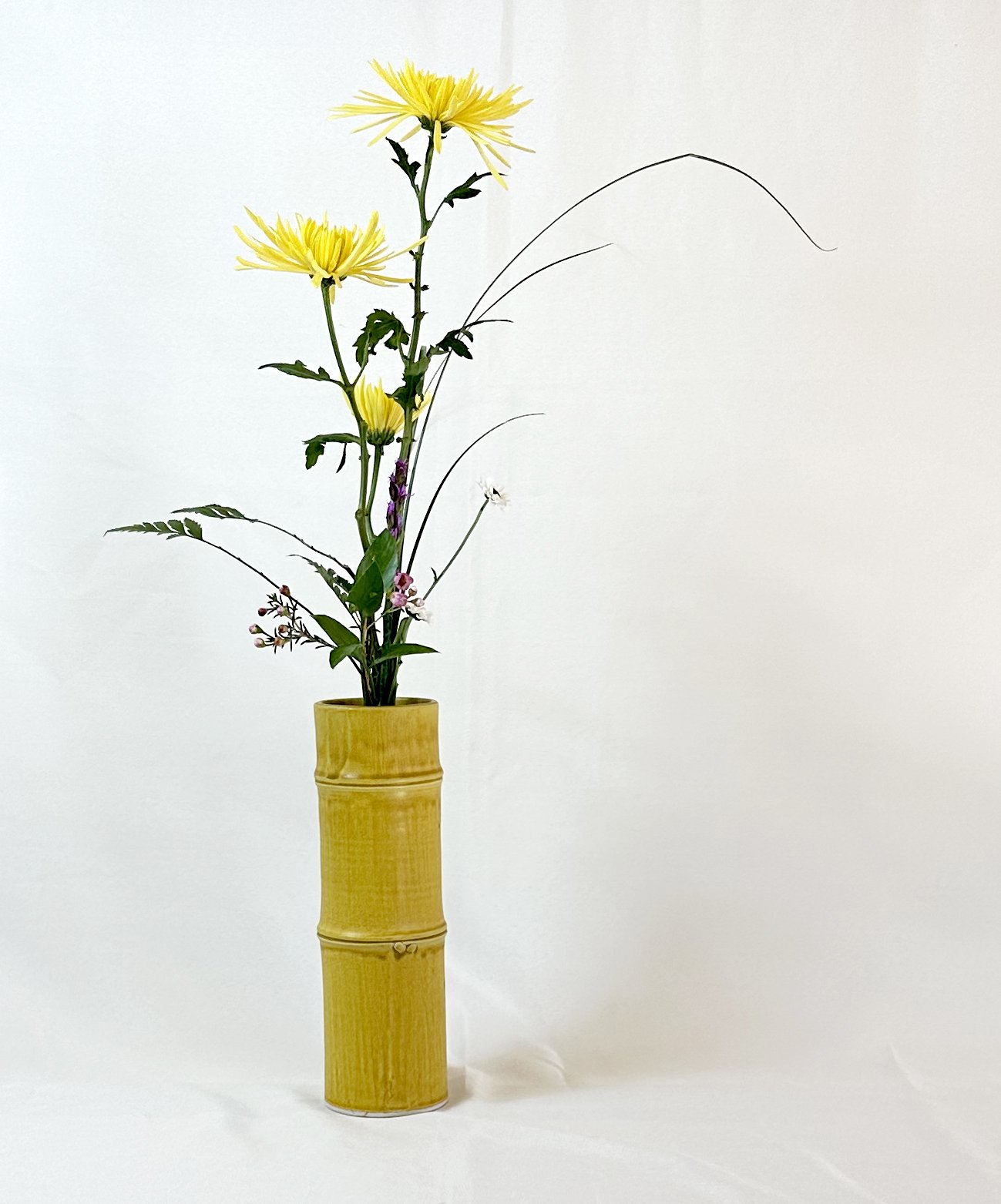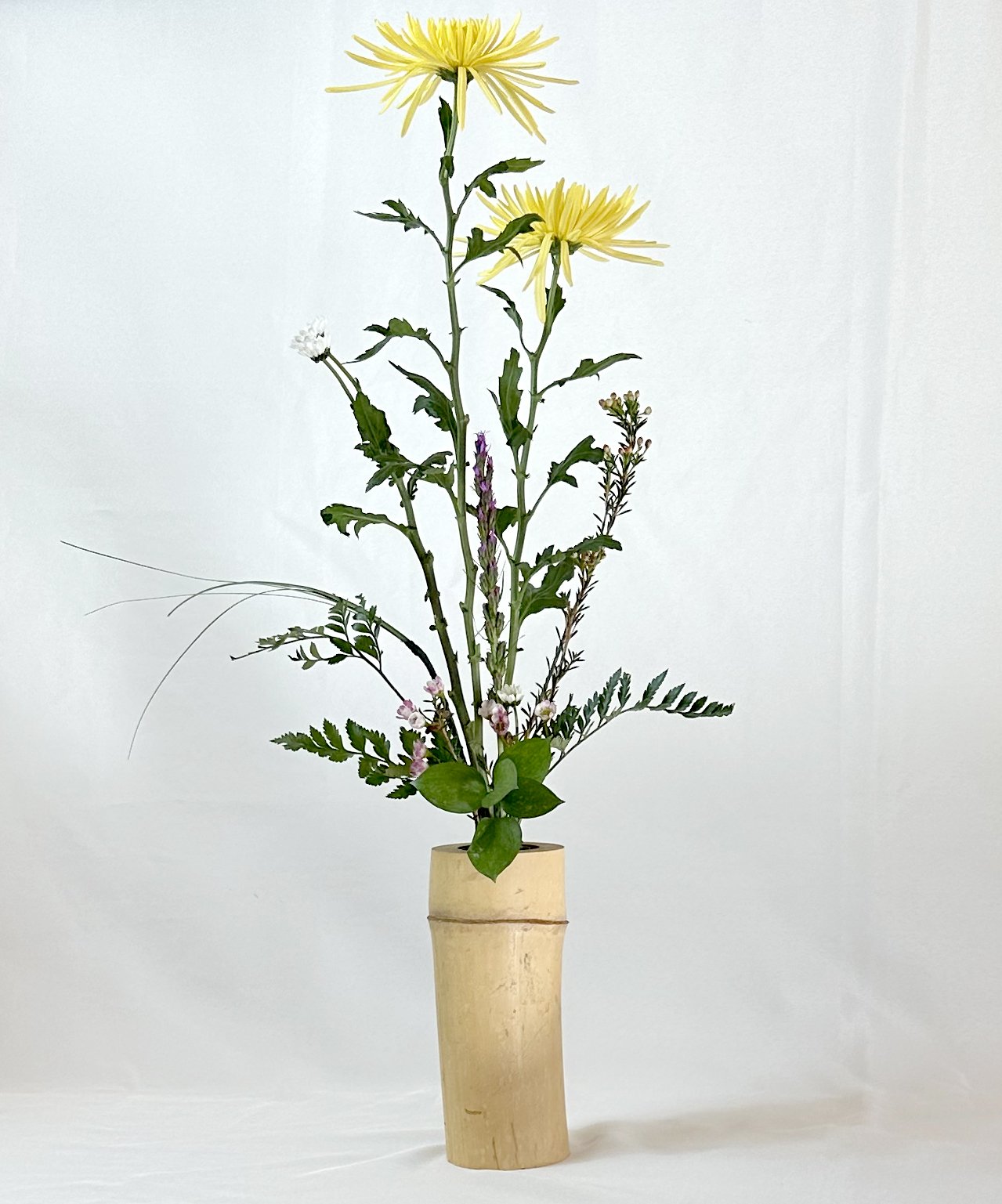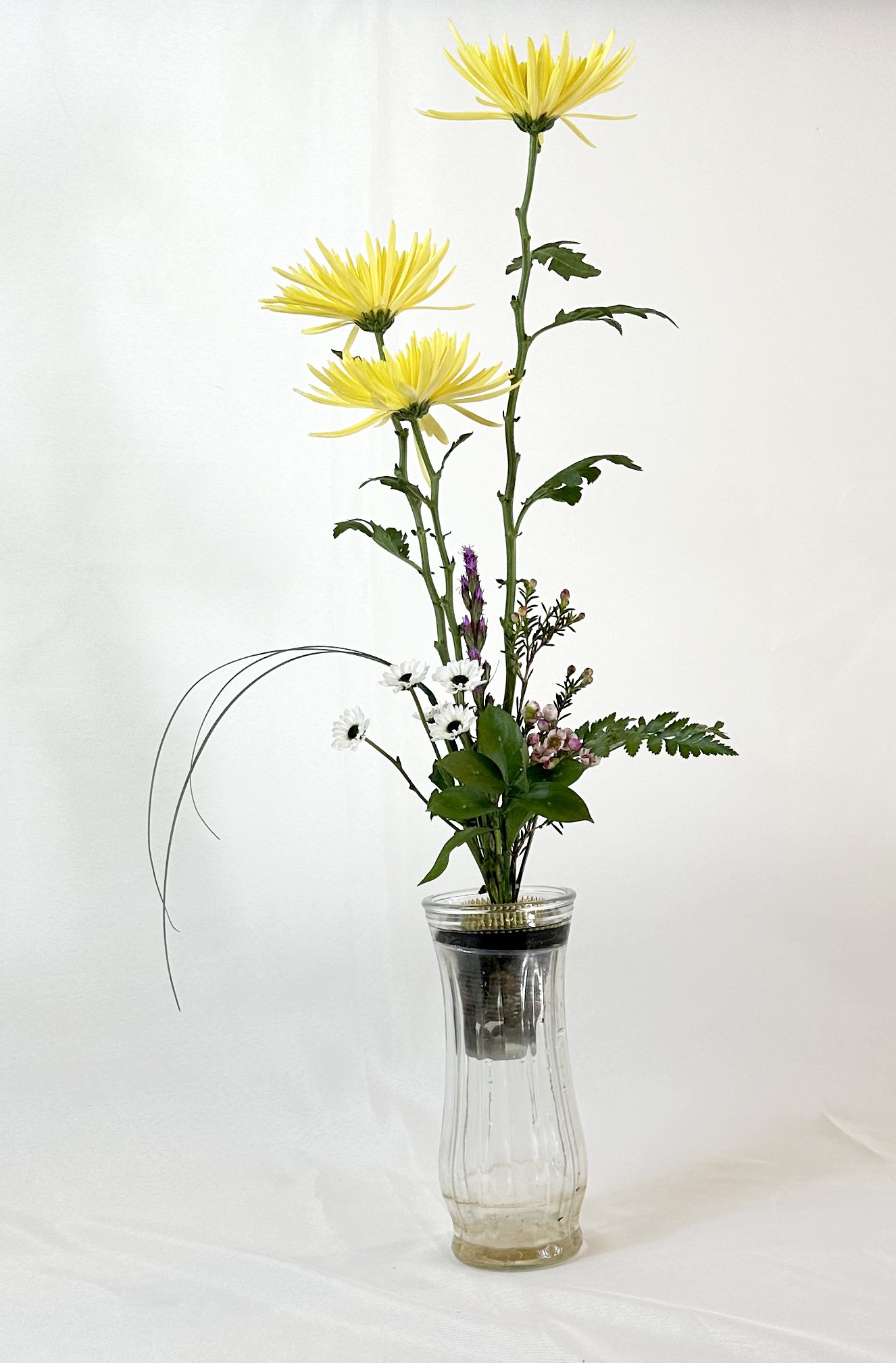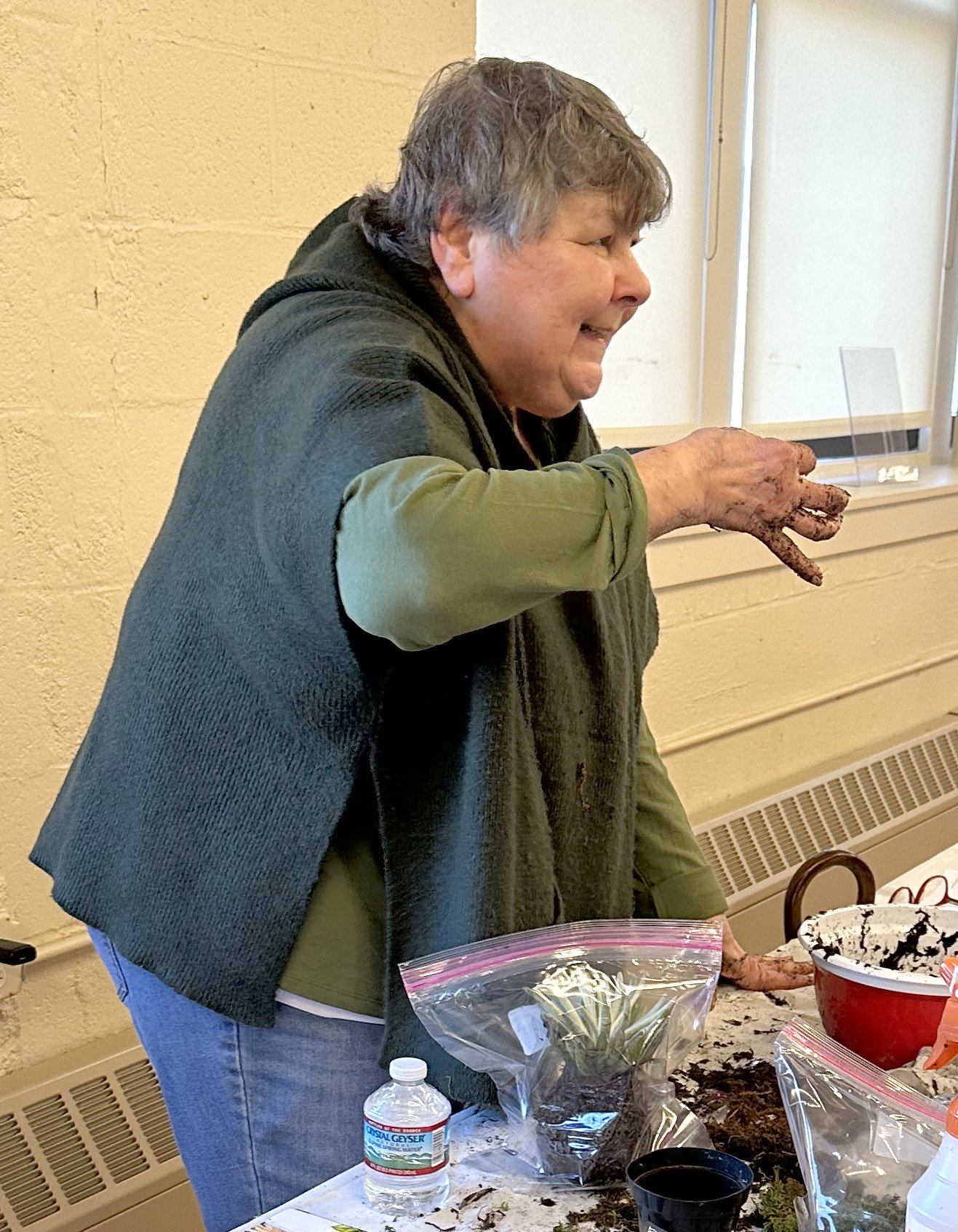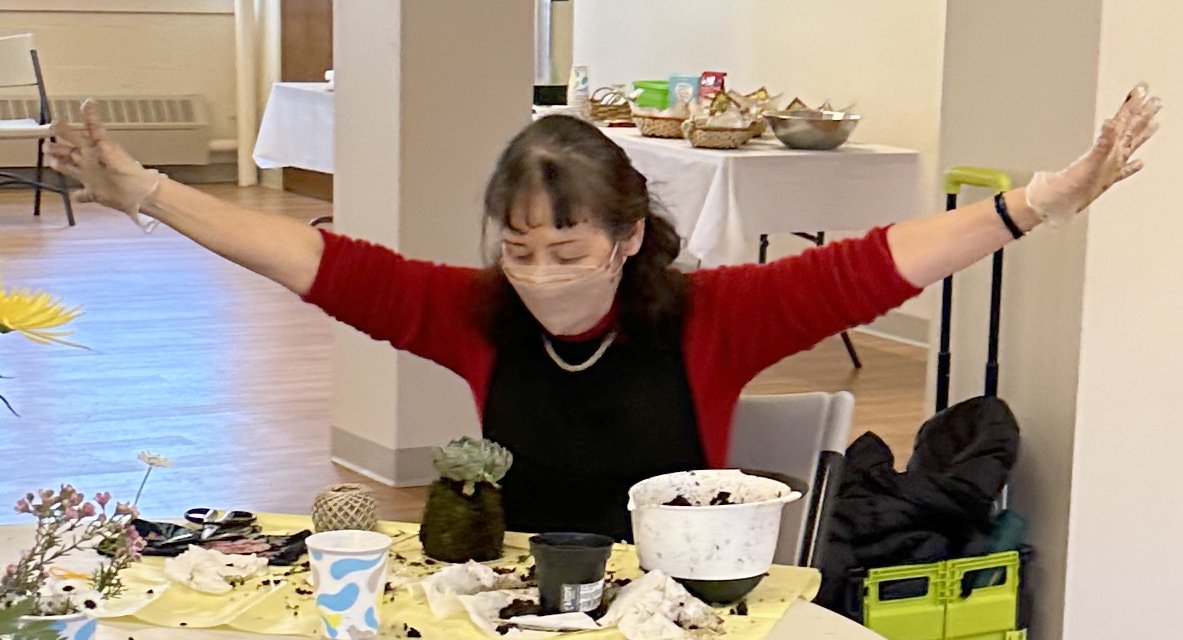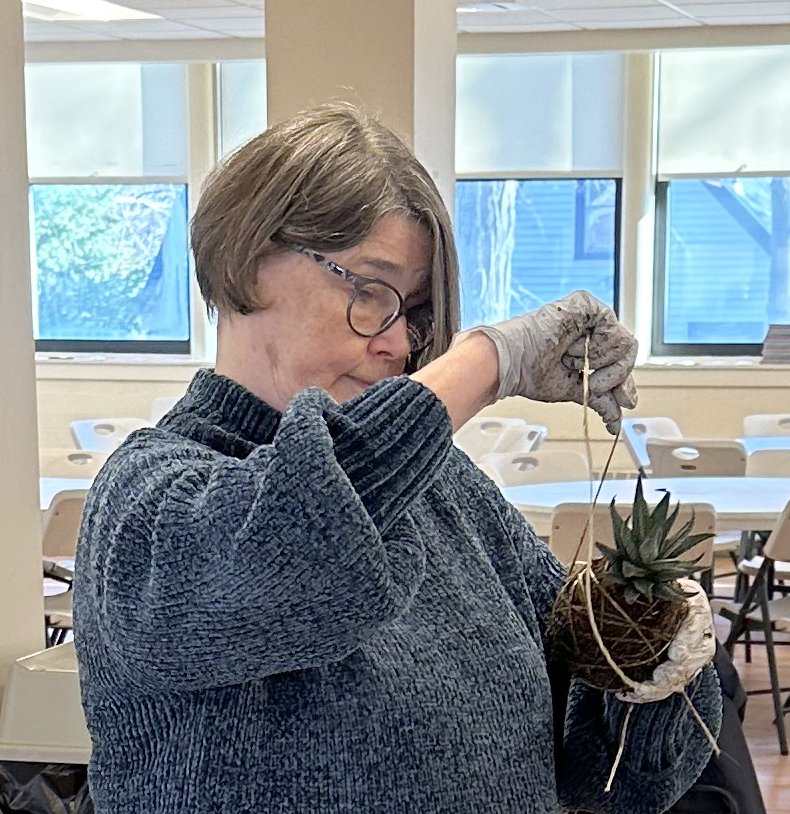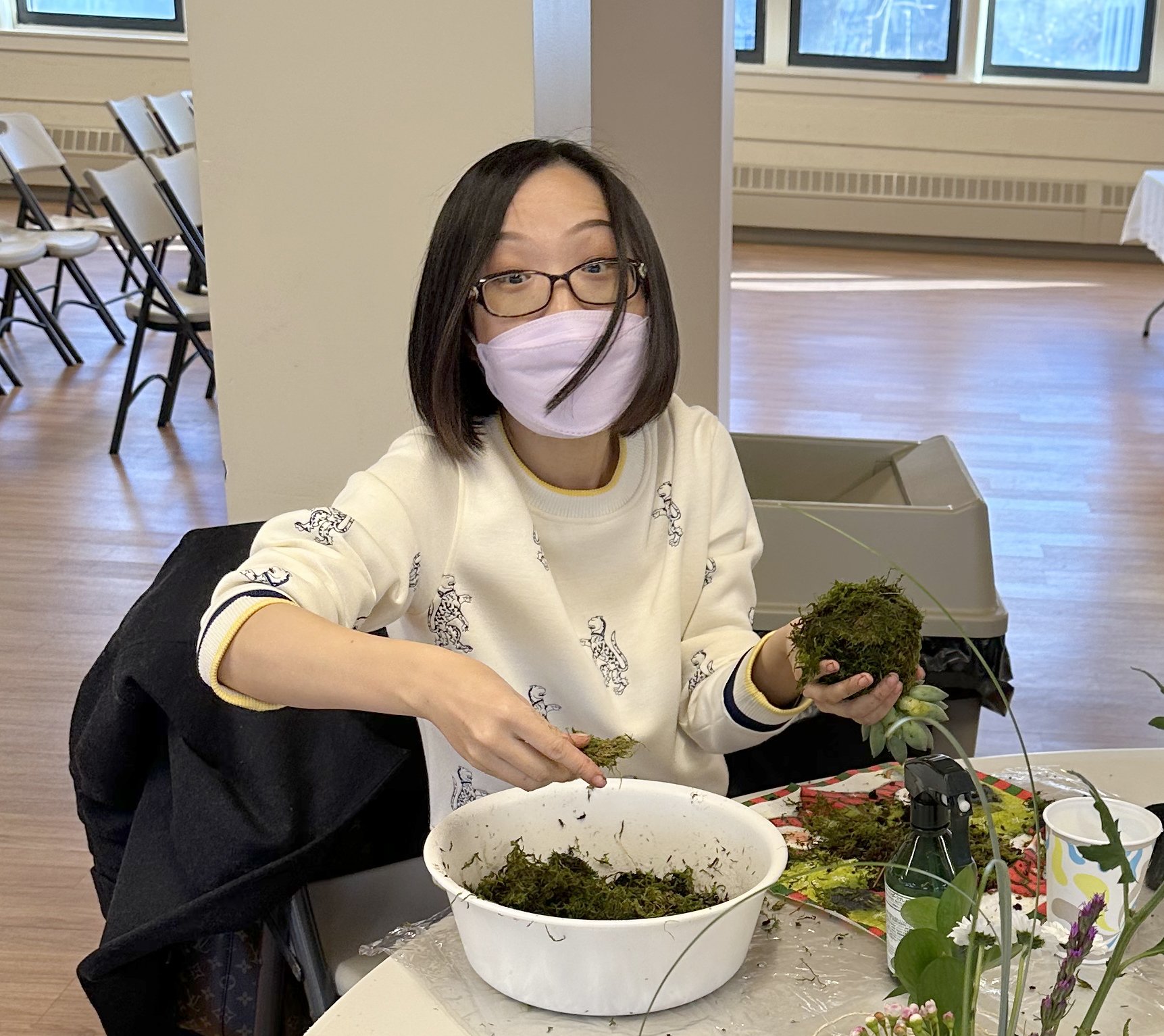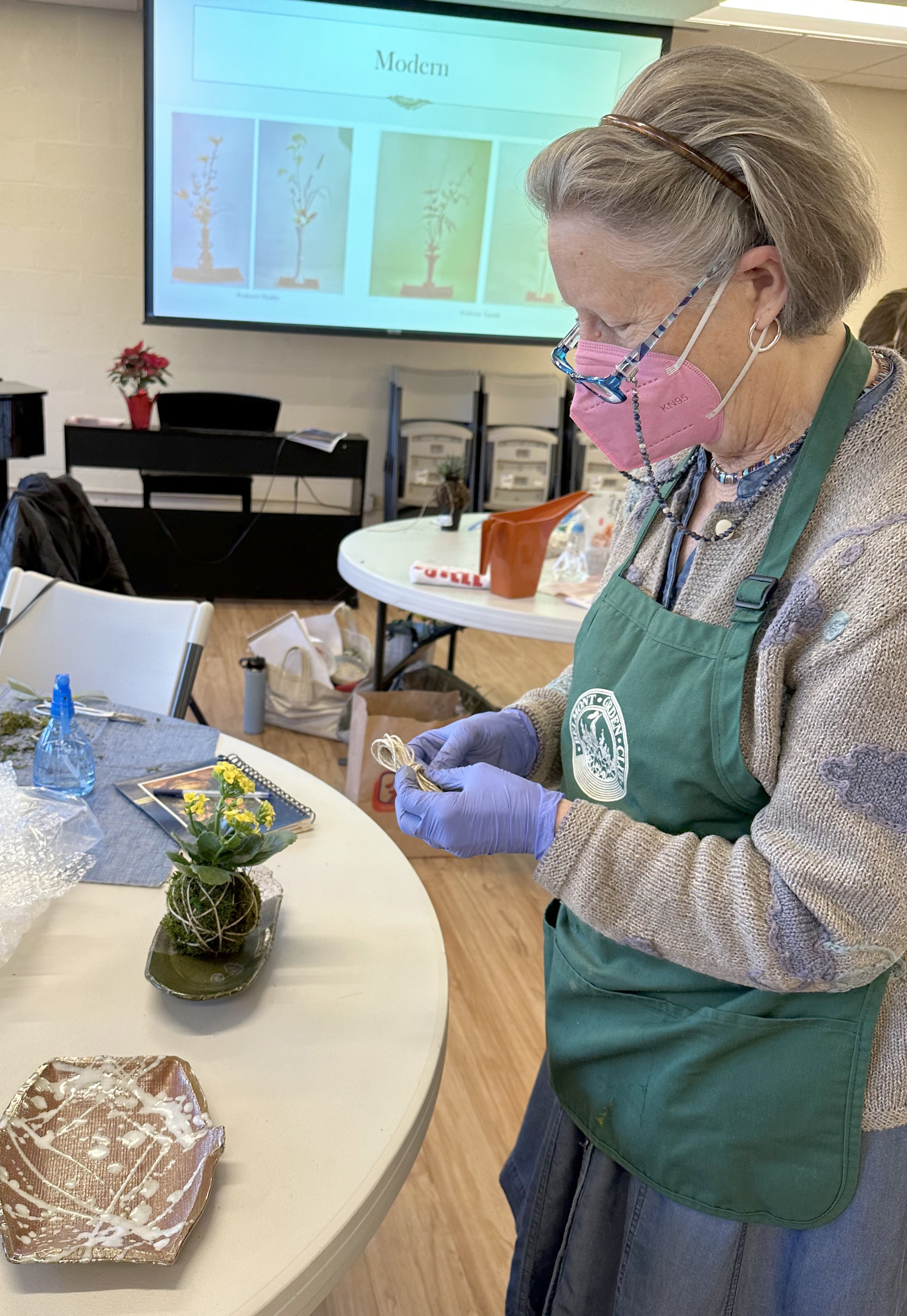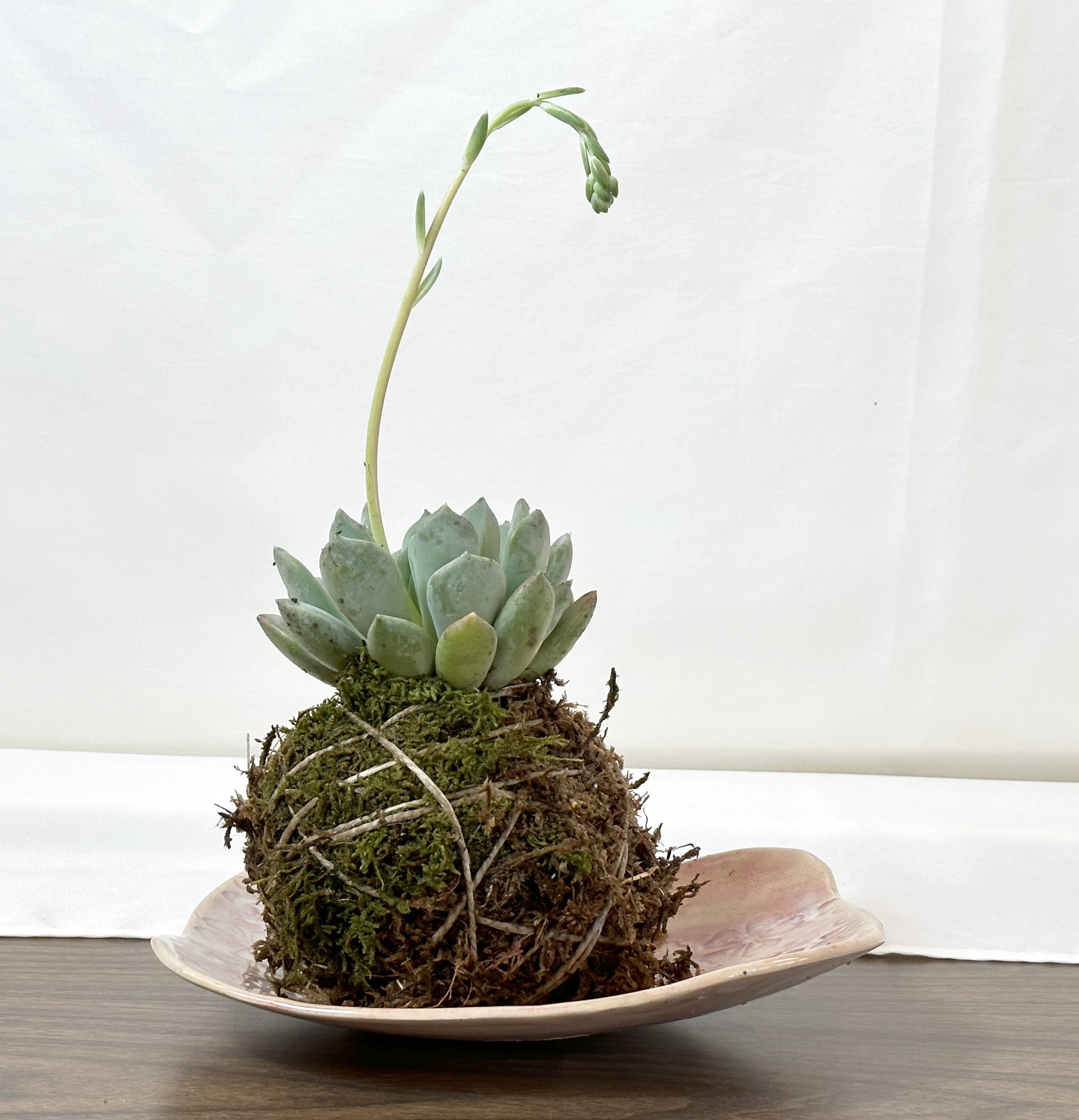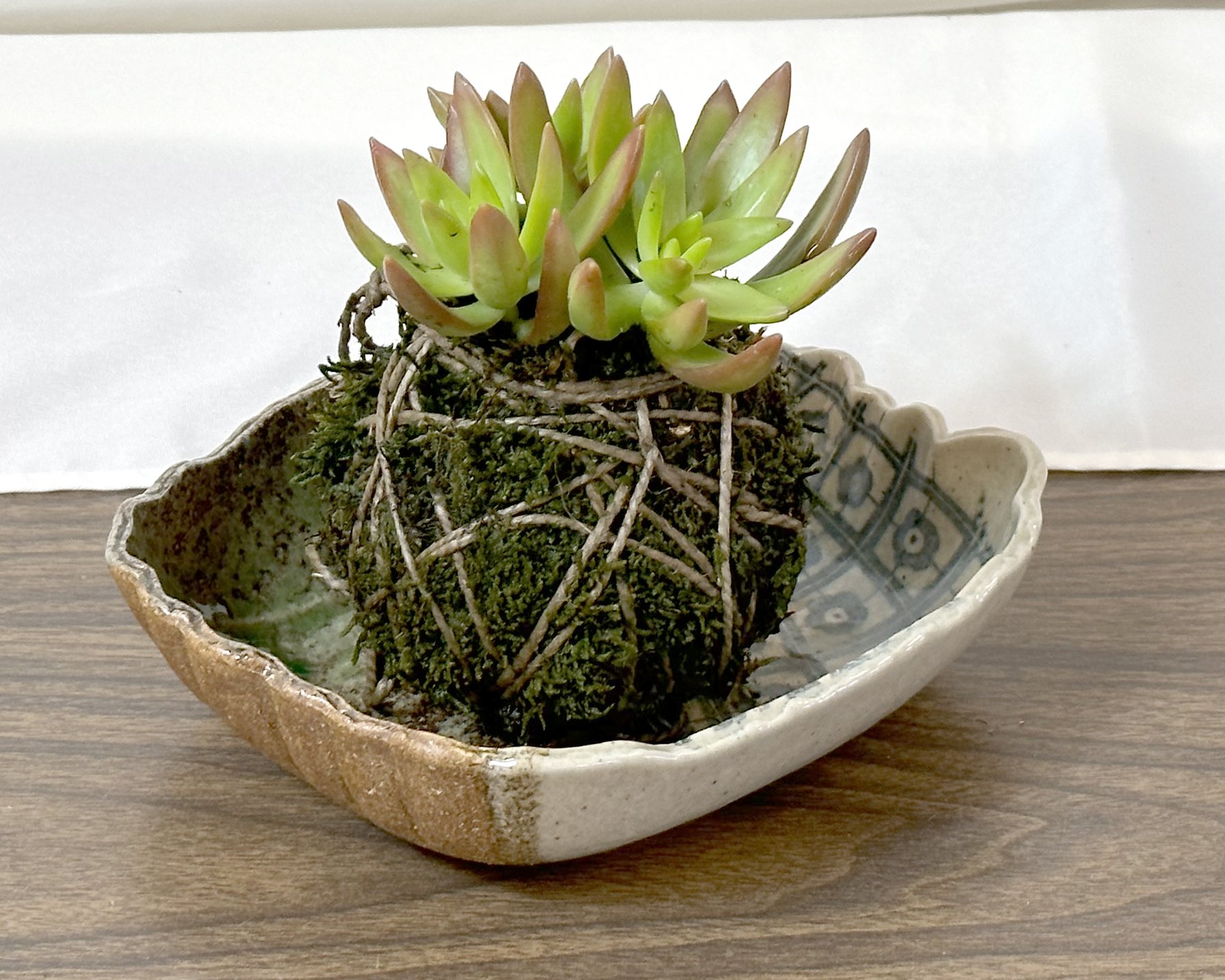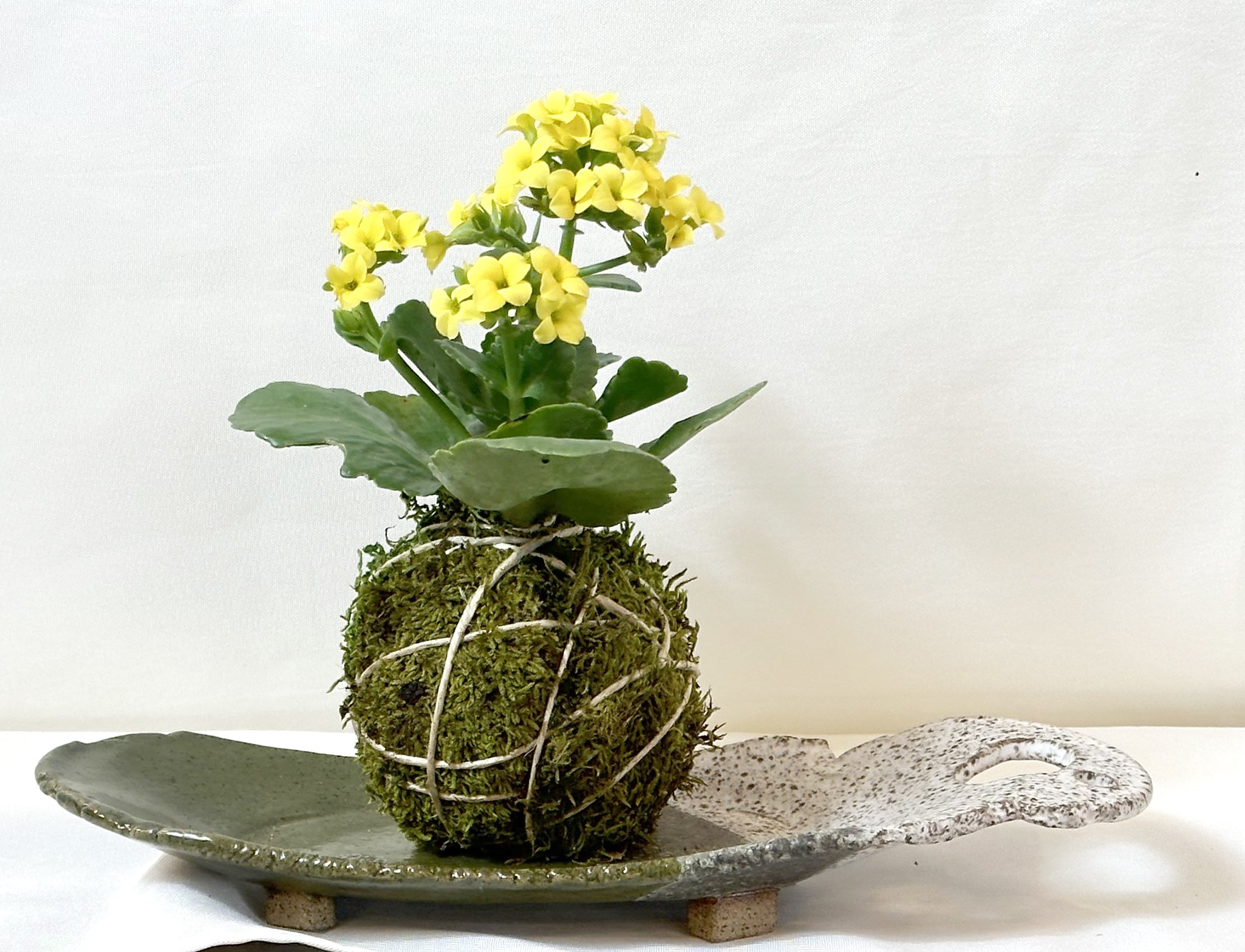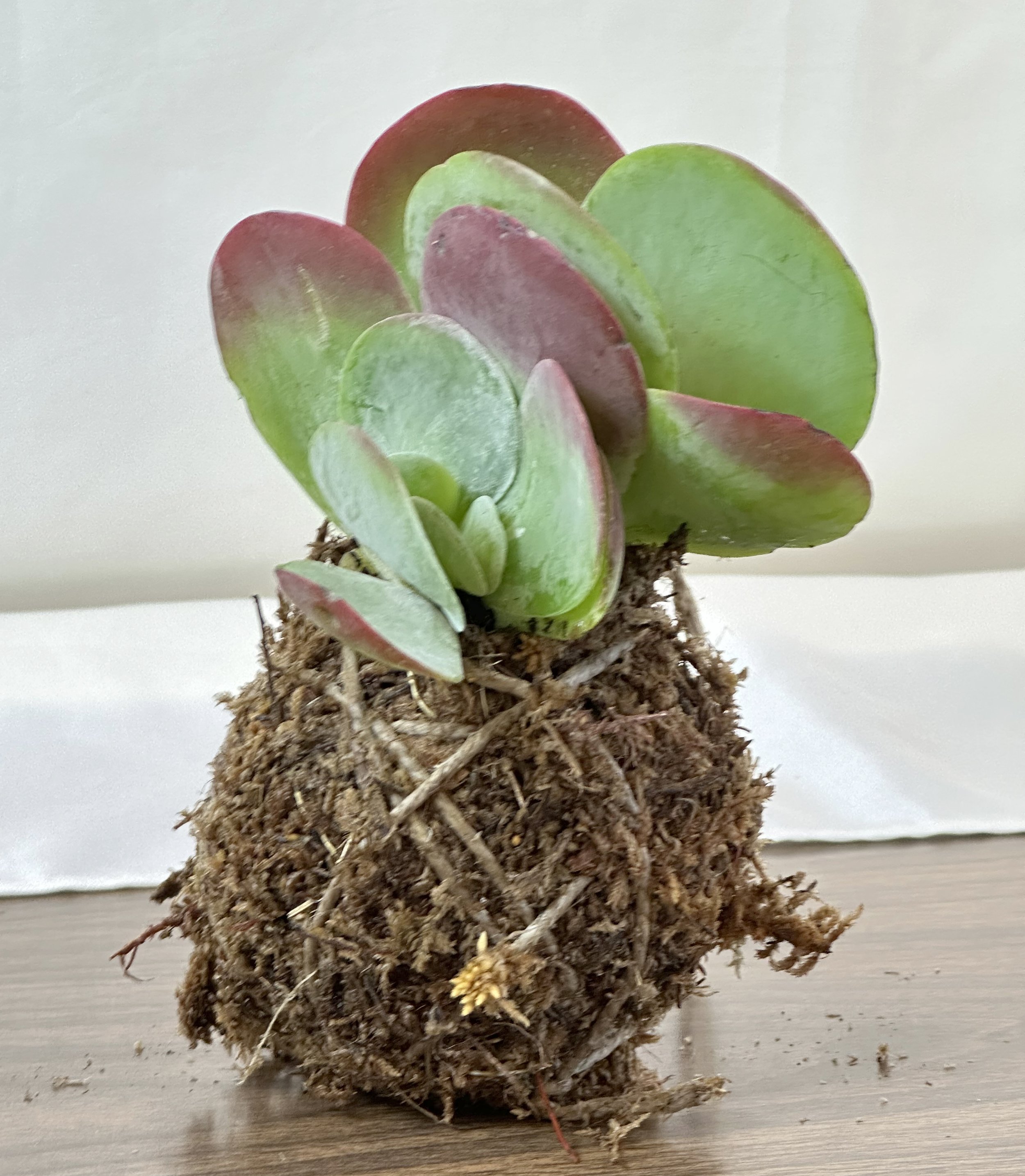Hatsuike 2023: Tatehana & Kokedama
Tatehana taught by Deb Young
Tatehana is divided into 2 parts- Motoki (Tree) and Shitakusa (field flowers). Motoki in the Traditional arrangement is typically a branch from a tree (preferably evergreen) and should be strong, straight and asymmetrical. In a Modern arrangement, it may be flowers or grasses and composed of more than one stem. Motoki is 1.5 to 2x the height of the vase.
Tatehana is divided into 2 parts- Motoki (Tree) and Shitakusa (field flowers). Motoki in the Traditional arrangement is typically a branch from a tree (preferably evergreen) and should be strong, straight and asymmetrical. In a Modern arrangement, it may be flowers or grasses and composed of more than one stem. Motoki is 1.5 to 2x the height of the vase.
The Shitakusa or "field flowers" is composed of flowers and grass materials. In a Traditional arrangement it sits below a clearly demarcated line and care should be taken to ensure the materials do not project above the lower limbs of the Motoki. These guidelines are relaxed in the Modern arrangement. Parts of the Shitakusa include the shoshin like center flower, the maoeki like lower element and the remaining field flowers. · Shitakusa should have different textures, number of elements on each side and characteristics; some sweeping upwards, others cascading, tall versus short, strong versus wispy, leaves and flowers. They are arranged in a tight formation so that no gaps are visible between the stems.
· A “shoshin” like flower is a center stem placed immediately next to and in front of the Motoki
· The “maeoki” like element extends forward in the lower part of the arrangment and sets the mizugiwa (as it does in a rikka arrangement).
Kokedama-
Joanne Wimberly
KOKEDAMA translates as moss ball. It is a Japanese bonsai artform in existence for a thousand years.
There are four elements to consider when creating Kokedama:
1. Plant: You can use ferns, grasses, flowering tree branches, e.g. cherry, maple tree branches for seasonal color changes, succulents, orchids, African violets, and many other types of plants.
2. Soil: Soil mixture should have a consistency that allows for shaping the ball but contains elements that improve drainage and moisture retention to support the plant. A 50/50 mixture of potting soil and peat moss is a good general mix.
3. Moss: Moss is one of the earliest life forms on the planet and there are thousands of varieties. It has no roots and absorbs water and nutrients through its leaves and stems. It is very hardy and will survive as long as it has water and light. Sphagnum moss is easy to use to wrap the ball; soak the sphagnum moss in water for 15 minutes and simply wrap the ball with an ample amount. If using sheet moss, avoid overlapping the seams
4. Twine : Hemp (Cannabis sativa) or jute (genus Corochorus) is better than string for tying the ball since string may deteriorate and fall apart. Hemp and jute have similar tensile strength but hemp is mildew, mold, and disease resistant so does not require treatment with insecticides or pesticides as jute does. You may choose to wrap with nylon thread or fishing line instead of hemp as it is less conspicuous. Eventually, new moss will grow over the twine or thread.

